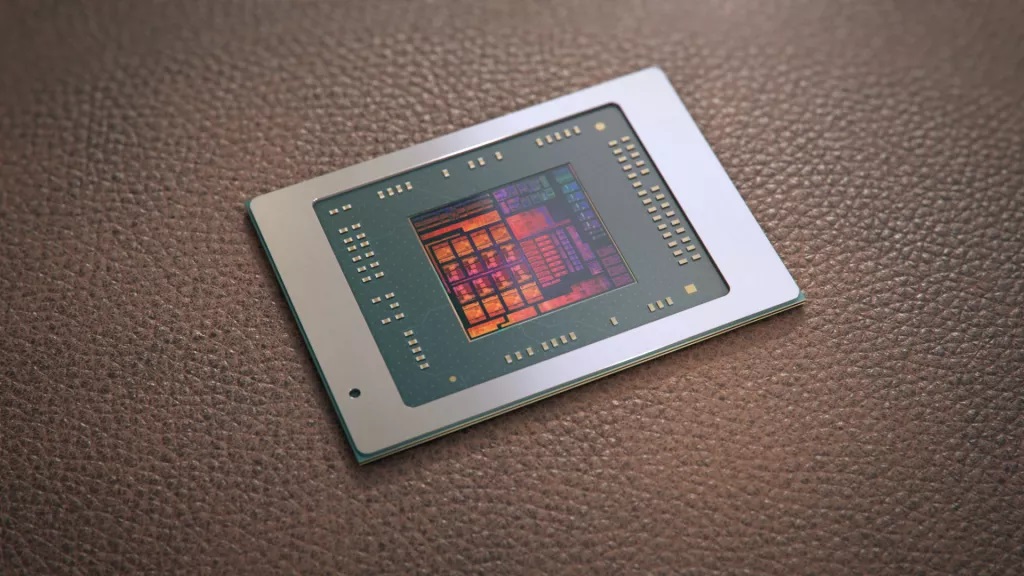AMD's next-gen console-like Strix Halo super APU said to be delayed until 2025
Its smaller Strix Point sibling pushed out a few quarters, too.

Variously known as Strix Halo or Sarlack, whatever you want to call it, the latest rumour is that AMD's much anticipated super APU is said to be delayed until 2025. In a further disappointment, the slightly less ambitious Strix Point APU is also said to be bumped by a few quarters.
Now, these are rumours concerning unannounced next-gen products from AMD. So, we're talking about delays from dates that are themselves unofficial. But if this new information from YouTube channel Moore's Law is Dead is accurate, it is rather a pity.
Strix Halo in particular is exciting thanks to its huge graphics performance potential. For starters, it's said to house a GPU packing 40 RDNA 3.5-spec compute units, putting its raw graphical power at least on a par with something like an AMD Radeon RX 6700 XT desktop graphics card, which sports 40 RDNA 2-spec CUs. That's fantastic for an integrated GPU primarily designed for laptops.
Of course, the immediate question for a really high performance integrated GPU is memory bandwidth. Will there be enough? Well, Strix Halo is rumoured to have a 256-bit memory bus, twice as wide as any existing APU and indeed twice as wide as all conventional desktop PC processors.
In that sense, Strix Halo looks a little more like the APUs that go into the latest consoles, such as the Microsoft Xbox Series X and the Sony PS5, than it does a PC APU. The exception is that Strix Halo is said to be a chiplet design, where those console APUs are single-chip monolithic designs.
Oh, and did we mention that Strix Halo supposedly has 16 Zen 5 CPU cores? Yeah, the thing is a monster. To put all this into context, AMD's current flagship APU, codenamed Phoenix and used to great effect in gaming handhelds like the Asus ROG Ally, has 12 RDNA 3-spec compute units and a 128-bit memory bus, along with eight Zen 4 CPU cores. So, Strix Halo is on a whole different level.

Indeed, it's such a radical departure, it's not clear whether it could be used in handhelds like Phoenix, or if its too power hungry for such small form factors—an ultralight gaming laptop though... yum. But what of Strix Point, Strix Halo's smaller sibling?
Keep up to date with the most important stories and the best deals, as picked by the PC Gamer team.
That's a slightly more straight forward follow up to Phoenix with a 128-bit memory bus and 16 RDNA 3.5-spec GPU compute units, making it a decent upgrade over Phoenix in terms of GPU performance and especially so in the context of handheld devices, while not being nearly as radical as Strix Halo.
Where Strix Point is said to be more innovative is its mix of four full-spec Zen 5 cores plus eight smaller Zen 5c cores. As we've discussed previously, in our Zen 4c explainer, AMD has detailed how its upcoming smaller and more efficient CPU cores differ philosophically from those found in Intel's hybrid CPUs, including Alder Lake and Raptor Lake chips.
Intel went for a completely bespoke design for its "Efficient" cores and can squeeze four of them into the same space as a full "Performance" core, albeit at the cost of, well, performance. Intel's Efficient cores are much slower than its Performance cores and also lack HyperThreading.

Steam Deck review: Our verdict on Valve's handheld.
Best Steam Deck accessories: Get decked out.
Steam Deck battery life: What's the real battery life?
AMD's Zen 4c, however, is exactly the same core as Zen 4 barring reduced cache memory sizes and being laid out more compactly in the silicon. As a consequence its less dense than Intel's small core, with AMD able to fit two Zen 4c in the space of one full fat Zen 4 core. However, Zen 4c is expected to come much closer to Zen 4 in terms of performance than Intel's smaller core manages in comparison to the full fat Performance cores in Alder Lake and Raptor Lake.
Anyway, Strix Point is said to be delayed until mid 2024, where the original expectation was a launch early next year. Overall, then, we're looking at what appears to be roughly a six month delay to both APUs.
That's hardly a disaster, but it is a pity if true. Had Strix Halo arrived next summer with AMD Radeon RX 6700 XT-plus performance in a laptop APU, that would have been super impressive. It will still be pretty trick in 2025, just that little bit less so given the assumption that desktop graphics performance will keep progressing in the meantime and the likes of a 6700 XT will be pretty old hat by then.

Jeremy has been writing about technology and PCs since the 90nm Netburst era (Google it!) and enjoys nothing more than a serious dissertation on the finer points of monitor input lag and overshoot followed by a forensic examination of advanced lithography. Or maybe he just likes machines that go “ping!” He also has a thing for tennis and cars.

